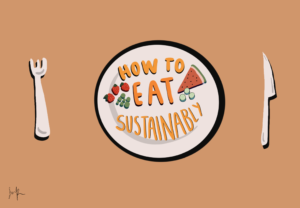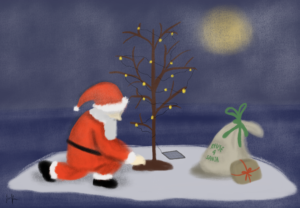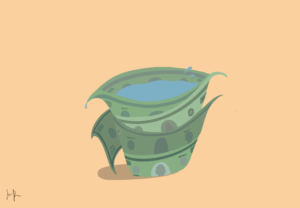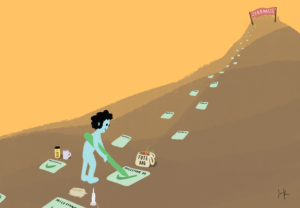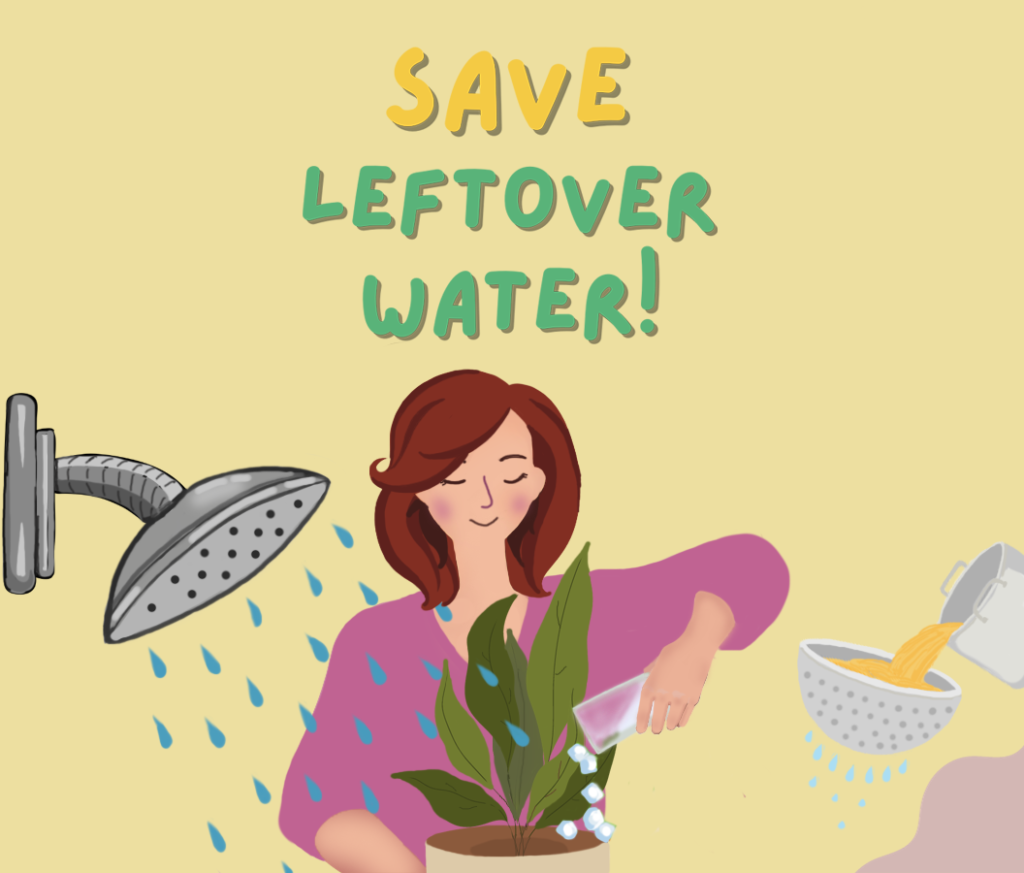
According to Aquasana, the average American household uses around 300 gallons of water in the house per day. There’s no doubt that long showers and running sinks must go. However, according to The Washington State Department of Health, the average person wastes 30 gallons per day unknowingly. If you want to reduce water waste, here are 5 simple tips you can follow:
- Water your plants
According to an EPA snapshot in 2017, the average American household uses 160 gallons of water to irrigate their gardens, which amounts to almost 9 billion gallons of water annually nationwide. Using leftover water from washing foods, fresh-water fish tanks, or water bottles will reduce water waste and water consumption for landscape purposes. Here are two possible ways you can collect excess water:
- Bucket in the Shower:
While waiting for the shower to warm up, place a bucket underneath the stream. Remove it when you hop in, and use the collected water to irrigate your garden.
- Rain Barrels:
If you place a rain barrel under the gutters on your roof, you can collect any rainwater collected on your roof. Use this water to water your plants.
- Use your pasta water
Generally, the water used to boil pasta is thrown away, as the noodles make the water
starchy. However, pasta water can actually be used in a variety of cooking processes. In vegetarian soups, pasta water can act as a perfect substitute for vegetable stock. Applying some pasta water onto bread or other goods before baking can create a crispy texture due to the extra starch in it. Whether you use it in your rice, cooking beans, or making sauce, pasta water can function as many helpful ingredients in an assortment of foods. So next time you’re about to throw away the pot of leftover pasta water, think twice and save it. I assure you it will be much more helpful next time you cook.
- From fish to plants
As mentioned above, the water used in fish tanks can be used to water your plants.
Here’s more information on why “fish water” is especially beneficial to your houseplants. Switching the water in your aquariums regularly is necessary because the food and waste in the water is broken down into chemicals, such as phosphate and nitrate, which build up and become toxic to the fish. However, these chemicals and other minerals in the water act as a nutritious soup for plants. Instead of dumping old fish tank water into the drain, water your plants with it. You’ll be able to reduce the amount of water spent in your garden that way and provide crucial supplements to your backyard. Just make sure the water is fresh, as salt water is harmful to plants.
- From pool to pool
The average pool requires 18000 gallons of water to fill. If you’re filling your pool with
water several times a year, the amount of water wasted, along with water bills, can seriously outweigh the fun pools provide. However, it’s possible to conserve your pool water. Instead of draining and refilling it, consider purifying it so it is clean enough to swim in again. A process called “reverse osmosis” can prevent chemical and bacterial buildup by forcing water through a semi-permeable membrane with pressure, filtering out all the unwanted particles. While buying one of these machines can cost a lot, it may be worth the investment as it eliminates any future needs for refilling your pool. Installing a reverse osmosis machine can reduce the hundreds of thousands of gallons wasted by households each year.
- Save the ice
A lot of the time, ice machines give you a little too much ice. Instead of tossing it in the sink, consider throwing it on your lawn or placing it into your pet’s water. It might not seem like much, but saving up water that would have gone to waste here and there really builds up to something greater.
Works Cited
Aquasana. “Average Water Usage in the United States.” Aquasana, www.aquasana.com/info/average-water-usage-in-the-united-states-pd.html.
“Changes to the Water Footprint Calculator Website.” Water Footprint Calculator, 11 July 2022, www.watercalculator.org/news/articles/changes-water-footprint-calculator/.
Eby, M. (2022, October 17). Why you should save your pasta water. Food & Wine. https://www.foodandwine.com/pasta-noodles/save-your-pasta-water
Environmental Protection Agency. (n.d.). Page name. EPA. https://19january2017snapshot.epa.gov/www3/watersense/pubs/outdoor.html
Follow meSara ManiezOwner at Life’s Little SweetsSara is an architectural designer turned work-at-home Mom. She lives in New Jersey by way of New England and New York. (2022, May 15). Uses for pasta water. Life’s Little Sweets. https://www.lifeslittlesweets.com/uses-for-pasta-water/
Outdoor water use at home. Water Footprint Calculator. (2022, July 15). https://www.watercalculator.org/footprint/outdoor-water-use-at-home/#:~:text=The%20average%20pool%20takes%20about,it%20is%20refilled%20each%20year.
Rinkesh, A (2022, July 28). 15 astonishing ways to recycle water at home. Conserve Energy Future. https://www.conserve-energy-future.com/astonishing-ways-to-recycle-water-at-home.php
Staff, B. D. (2018, March 22). Use these tips to save water and cut your monthly Bill. The Fill. https://www.budgetdumpster.com/blog/how-to-reuse-water/
Washington State Department of Health. “Healthy Foods: Eating Healthy on a Budget.” Washington State Department of Health, doh.wa.gov/sites/default/files/legacy/Documents/Pubs/331-450.pdf.
What is a reverse osmosis system and how does it work?. Fresh Water Systems. (n.d.). https://www.freshwatersystems.com/blogs/blog/what-is-reverse-osmosis
The views and opinions expressed are those of the authors and do not necessarily reflect nor represent the Earth Chronicles and its editorial board.






